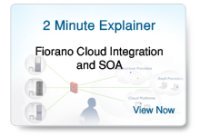Enterprises must have an application integration strategy and a comprehensive middleware infrastructure to meet the growing needs of modern business. Click on the links below to learn how businesses are streamlining their internal processes and integrating their systems using Business Components deployed over an Enterprise Service Bus.
Fundamental
Integration Patterns
All application integrations fall into one of the following three
patterns: database consistency relationships, multi-step processes
and composite application patterns. Developers need to understand
all three basic integration patterns use one (or more) of them as
required based on the requirements of the final application.
Traditional integration is performed using a variety of point-to-point communication mechanisms using an architecture where the end-point applications are smart but the network isn't.
The
Modern Approach - Business Components plugged into an Intelligent
Connectivity Fabric
Modern business applications are assembled by combining a set of
reusable, independently developed business components. Business Component
Architecture offers several advantages over traditional application
design approaches.
The
Enterprise Service Bus - Key Middleware for Business Components
An ESB is a middleware platform that supports intelligent routing of
information between business components distributed across a
network. Unlike other platforms, ESBs support both request/ reply as
well as event-driven interactions between business components on a
single technology base with a shared component model and common
tools for design, development, deployment, security and
administration.

 Japan
Japan Germany
Germany
